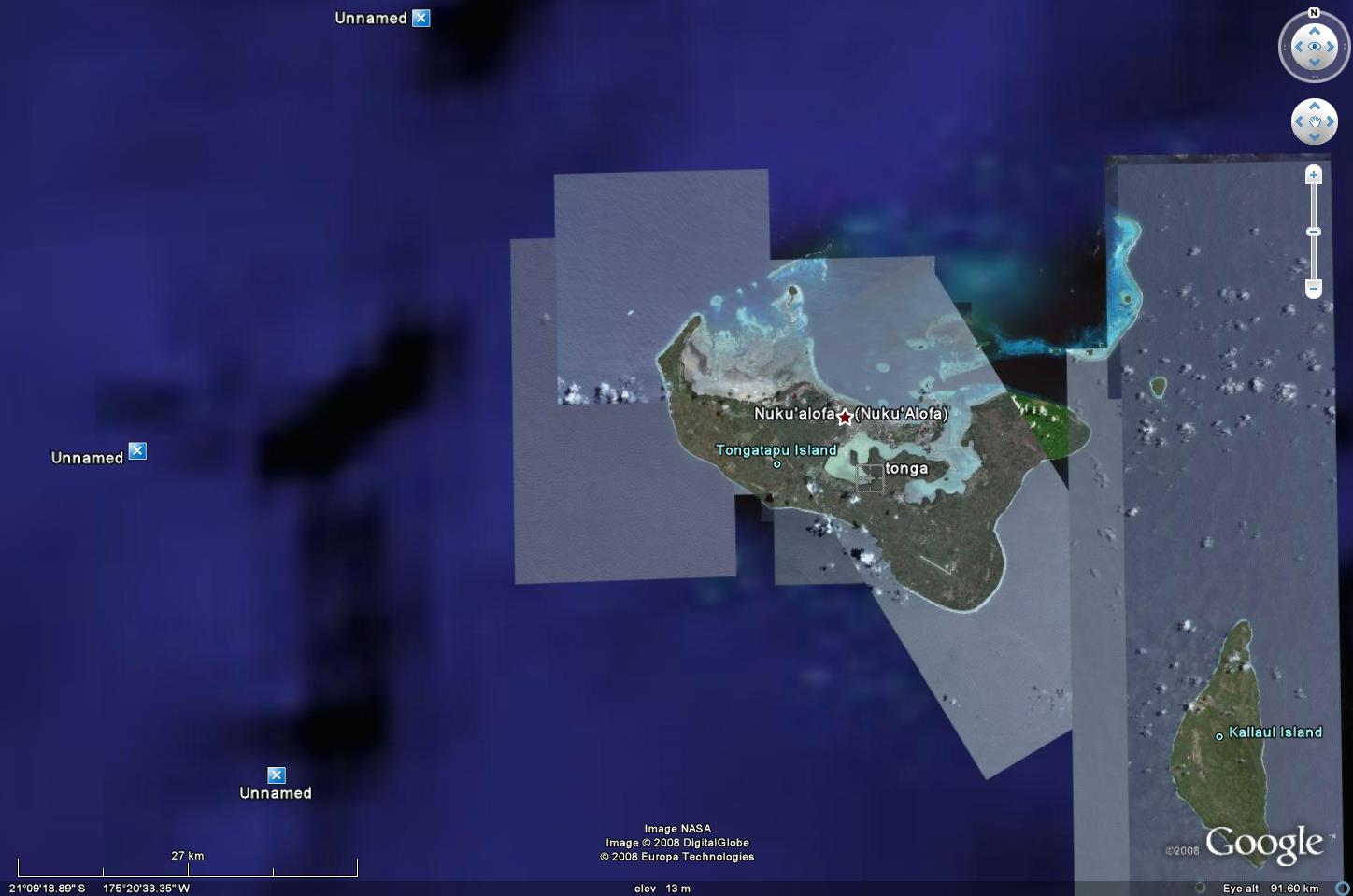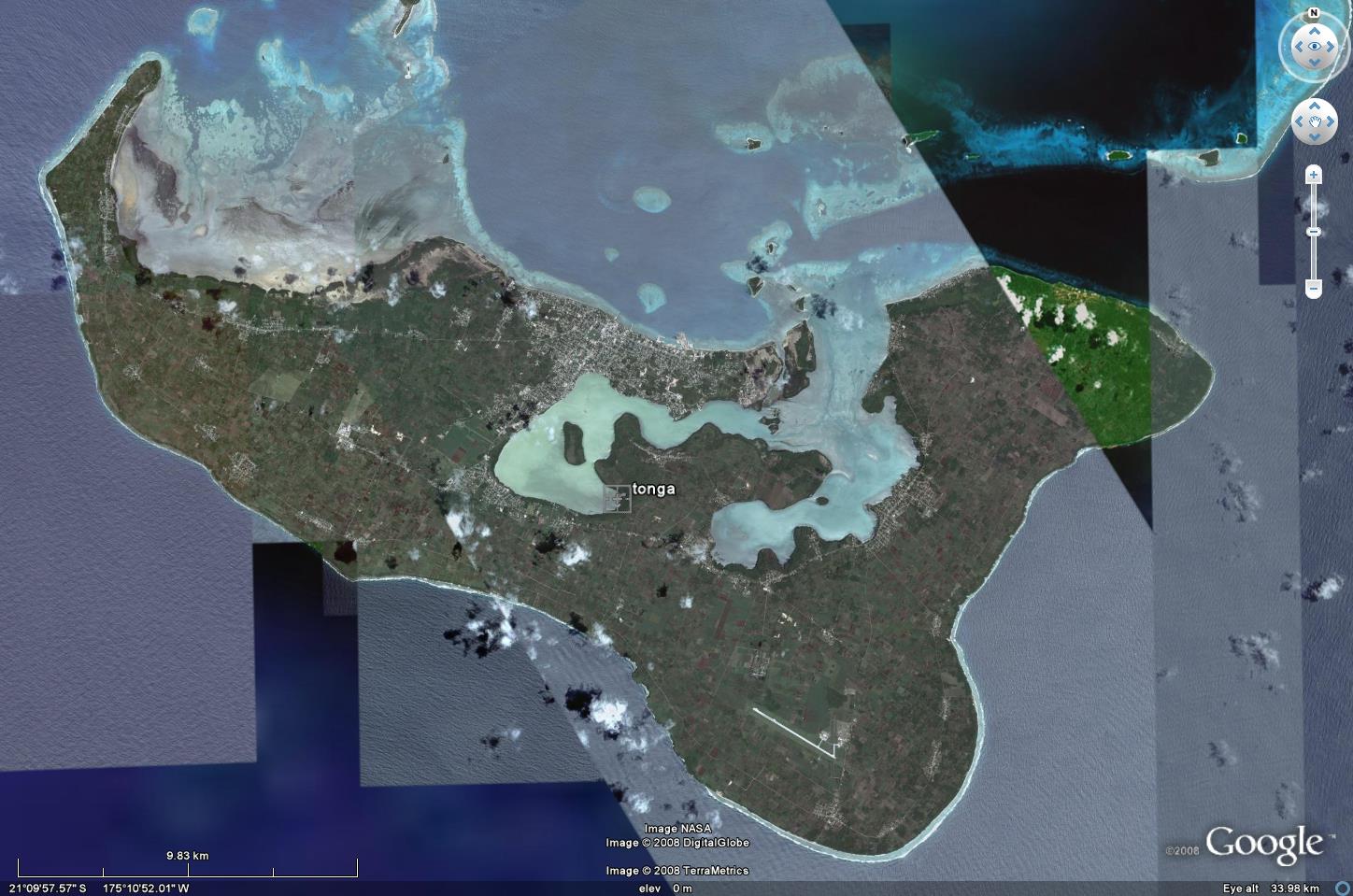9 October 2008
Volcanic flank collapse and tsunamis
Posted by Dave Petley
A few years ago the media got rather excited about a paper that suggested that there was the potential for a giant flank collapse on the Cumbre Vieja volcano in the Canary Islands. A model of the resultant tsunami suggested that it could be sufficiently large to cause huge losses throughout the coastal areas of the North Atlantic. Most scientists now believe that this tsunami was something of an exageration of a worse case scenario, (see for example this critique) but the potential for a flank collapse to generate a local tsunami event is very real, albeit comparatively rare. As a result, there is considerable interest in trying to understand these events better.
At the GSA Annual Meeting this week, Matthew Hornbach from the University of Texas presented a rather interesting study that has just been undertaken on the island of Tongatapu in Tonga. Tongatapu is located in the South Pacific with a number of active volcanoes nearby (Fig 1).
 Fig. 1: Google Earth image of the island of Tongatapu showing the location of three unnamed submarine volcanoes to the west.
Fig. 1: Google Earth image of the island of Tongatapu showing the location of three unnamed submarine volcanoes to the west. Hornbach found that on Tongatapu there are seven coral boulders located up to 400 m from the current coastline (Fig. 2). The largest of these boulders has a mass of about 1200 m. The boulders have clearly been lifted from the coral that fringes the island – Science News reports that for the largest boulder the point in the reef from where it has been removed is clear.
Now, this island is flat, meaning that the boulders cannot have rolled there. Hence, Hornbach has concluded that these boulders were emplaced by a huge tsunami, which they have provisionally dated to have occurred in the Holocene (i.e. in the last 10,000 years). This is potentially the largest tsunami deposit so far recorded – the wave must have had a run up of >40 m vertical distance. Hornback believes that the source of this tsunami was a submarine volcano located to the west of the island (Fig. 1). They report that bathymetric surveys of this feature show that it rises to to the water surface – some reports suggest within 65 m. This large volcano apparently has a section missing from the east side, which Hornbach interprets as being the result of a flank collapse – i.e. a giant landslide in which the side of the volcano collapses. Flank collapses undoubtedly can cause very large, localised tsunamis.
As an aside, it is interesting to note that the major population centres are on the sheltered north and east side of the islands (Fig. 3) . I wonder if this is a coincidence?



 Dave Petley is the Vice-Chancellor of the University of Hull in the United Kingdom. His blog provides commentary and analysis of landslide events occurring worldwide, including the landslides themselves, latest research, and conferences and meetings.
Dave Petley is the Vice-Chancellor of the University of Hull in the United Kingdom. His blog provides commentary and analysis of landslide events occurring worldwide, including the landslides themselves, latest research, and conferences and meetings.
you can find the results of a Super huge flank Collapse of a large area South of Japan hundreds of Kilometers of Earth that resulted in the Huge Sand Sheets all along the West Coast of North America and South America look for your self use say Google Earth or ? and see the massive Tsunami run-up’s scars on the Santa Catalina Islands near California USA
[I can find no references to support the idea that these sand sheets result from a mega-tsunami. Please can you provide some detail. D.]